#strophium
Text
A wild Sewpronia appears! She's here to kick ass and trans gender!

Sewpronia is a gallus, a devotee of Magna Mater from ancient Rome. The galli originated in what's now Turkey - or maybe Greece, or Mesopotamia. They arrived in Rome during the Second Punic War, after a prophecy declared the Romans couldn't win without the help of Magna Mater.
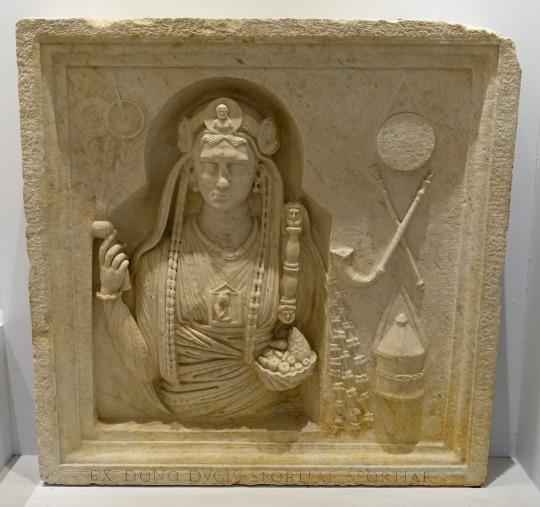
Galli were assigned male at birth, but they dressed femininely. They may have been what we'd now call transfeminine, nonbinary, or a "third gender" in Roman society: "They say they are not men...they want to pass as women," as Firmicus Maternus said.
It's always messy to use modern identities for ancient cultures. But for our purposes, Sewpronia is a trans gal. Her name is a pun on Sempronia the conspirator from Bellum Catilinae, because every woman needs to commit a little treason sometimes.

Her white and purple tunic, yellow shoes and makeup come from a description of the galli in Apuleius' Metamorphosis, the black and bronze jewelry are based on a gallus' grave found in northern England, and her long bleached hair follows the description in Robert Turcan's The Cults of the Roman Empire. Underneath, she has a strophium (bra/chest wrap) and subligaculum (loincloth).

Roman women wore this bikini-like outfit when exercising, as shown in this Sicilian mosaic:
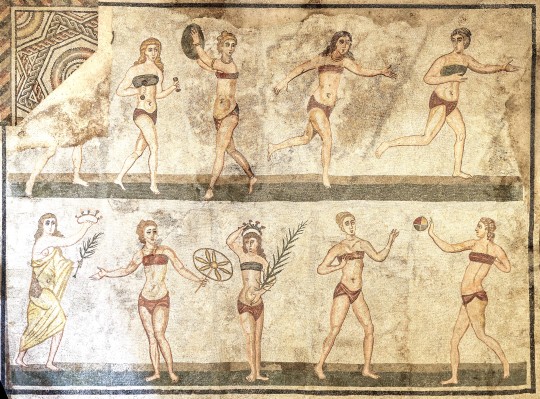
The galli had a curious place in Roman society. Men who were seen as too effeminate were looked down upon, and being compared to a gallus was typically an insult. I'm also not sure whether Roman citizens could become galli, or only non-citizens could, or if this changed over time. But everyone accepted that there was a place for the galli and their goddess in Rome - even Cato wouldn't have disputed that!

Please excuse any historical inaccuracies or poor styling choices I made - and send me any good sources on the galli you know so I can learn more! In the meantime, I'm going to make Sewpronia more cute outfits. She appreciates them much more than Cato the "shoes are modern decadence" Yarnier.

Sewpronia and Cato are based on Allison Hoffman's AmiguruME doll pattern. Happy Trans Day of Visibility, everyone!
#sewpronia#cato the yarnier#crochet#galli#gallus#trans day of visibility#trans#queer history#jlrrt speaks
73 notes
·
View notes
Text
Too tired to draw this after work last night but hold in your head the image of woman Stef Maturin braiding woman Jack Aubrey’s hair (she’s still a navy captain and she’s in a rush to dress for something so she needs to multitask) while Jack is lacing up her own linen sports bra* and explaining the principle behind the garment to Maturin, whom Jack misjudges as not knowing much since she is truly way too small to have ever needed to think about support. Anyway, Jack is going on about adaptations to life aboard. Compact furniture, bars across your bookshelf, etc. “You can’t have things swinging around all silly on a ship. I also need to be strapped down.” And Maturin’s thought bubble just says STRAP?** and she blushes and swats her thought bubble away with her hand.
———————
* The entirety of gendered history has happened differently, so in this world, they already invented the sports bra, it’s primarily linen, and they have maybe also already figured out how to vulcanize rubber fifty years early for elastics. In our world, the first sports bra will be invented in 1977 by sewing two jockstraps. Incidentally, I don’t think the Roman strophium looks supportive enough to count as a sports bra, though it is a bralike garment.
** this would have been made of leather in the ancient world, and perhaps the one she is picturing is too, but like I said, we are giving them the vulcanization of rubber 50 years early. But not silicone. We can’t get TOO crazy with our Regency-equivalent era materials science.
72 notes
·
View notes
Note
for the Director's Cut meme: how about "To Make Clean, To Wipe Away"? I'd love to hear you talk more about Kersh/Bethesda.
Oh man. Putting this under a cut because of the nature of the fic. Fic is here if anyone wants to follow along.
Title: basically this is the dictionary definition of "absterge".
I don't write fic in first person often, but Legion of the Damned has little bits in first person from Kersh's POV, and that was the voice it made sense to me to write this in.
(There's an earlier, unwritten, version of this that is Bethesda's POV and goes more into her upbringing on Eschara; but that didn't seem like what Cody was looking for, so I wrote Kersh's POV instead.)
Bethesda is described as small and scrawny in Legion of the Damned -- I suspect she was undernourished as a kid, and is going through puberty late, at least by 21st century US standards.
"generative organ" -- my answer to the question of what Zachariah Kersh would call his penis. It kind of gestures at "reproductive organ" without actually saying that, because Kersh's reproductive organs are in his chest and neck.
"since I was less than a century old" -- Kersh is an old, old man, even by Space Marine standards.
"donning Dorn's mantle" and "achieving endorphic communion" -- both lovely phrases, both directly from Legion of the Damned.
"no words for this" -- yeah, at least in this fic, Katafalque wrote an entire guide to sadomasochism without once mentioning that it might be sexual. Imperial Fists be like that.
Bethesda in Kersh's bed -- yes, she has a giant crush, but also the poor girl has no privacy. She and her brother and father live all together in a tiny room next to Kersh's. Sometimes sleeping on a stone slab is worth it to get away from your dad and brother for a few hours.
"I dream that I am a man, and I hold my wife in my arms, as a man would." -- Kersh isn't a man, but he is kind of a gentleman, with some traditional ideas about men and women. If lying with Bethesda isn't unthinkable and impossible, then they could only be doing it as a (human) husband and wife, clearly.
"As Scourge, I have my own washroom" -- this is prior to the whole Stigmartyr debacle, so Kersh is still in favor with his chapter and no one has put him in a box yet.
Bethesda's breast-band -- I was imagining something more like a Roman strophium than a modern bra, if that makes sense. Also, given what we know about Bethesda's build, she probably doesn't have a lot going on there, either because of the delayed puberty I mentioned above or just because she's built like that.
"checking to see if I am looking" -- she's flirting SO hard right now.
"but I am capable of shame" -- Cody pointed this one out, and I like the dichotomy of Kersh's nudity being completely unremarkable but Bethesda's being special and private. Usually when a someone is unconcerned about their nudity in front of a servant, the implication is that the servant isn't really a person, but for Kersh it's the reverse -- he's not really a person, but Bethesda is.
"To me, you are a very attractive man." -- Bethesda is trying SO hard.
and it works out for her!
happily ever after, at least until the grimdark catches up with them.
3 notes
·
View notes
Text
things i learnt reading three books of baru:
seth dickinson really likes the words “palimpsest” and “strophium”
#lunellum made a point that palimpsest is used for any paper not just scrap which is weird#ttbc#baru cormorant#honestly one of my main critiques is that occasionally the books feel like#look at the big words i know!
15 notes
·
View notes
Text
The History of Corsets: A Connection to Cats
Come along for a fascinating tour into the history of corsets and their adorable relationship with cats! Try imagining a period in ancient Greece when women supported their bodies with specialized clothing called “strophiums”, it’s a thick layer of clothing that helps them support their bodies. But do you know that the real story of corsets started in Europe during the Renaissance period? By the…

View On WordPress
#bloganuary#body positivity#cats#corsets#dailyprompt#elastine#fashion#flexible clothing#love yourself#lycra#mental health#personal blog#polyester fabric#victorian era#vintage fashion#women equal rights#women with cat
0 notes
Text
Buddhist Clothing
Draped clothing:
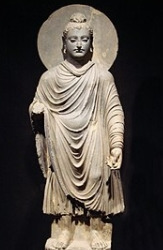
A draped garment is one that is composed of a single piece of material that is draped around the body rather than being cut away or sewn as is the case with a fitted garment. Drapes can be fastened to the body by knotting, pinning, fibulae, clasps, sashes, belts, tying drawstrings, or simply friction and gravity. Many draped clothing are made out of simply one piece.
Kasaya (clothing)
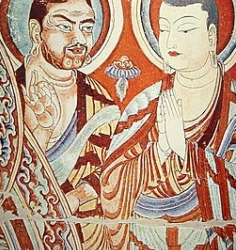
The robes of fully ordained Buddhist monks and nuns are called kya, after a brown or saffron hue. In Sanskrit and Pali, these garments are sometimes referred to by the more generic name cvara, which refers to the robes regardless of colour.
Pratheedhi
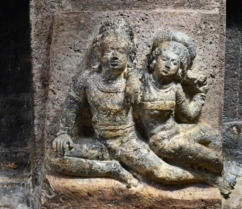
Pratheedhi, a loose garment was a part of the bride’s attire made of simple strip of cloth. Pratidhi was an unstitched garment similar to almost all contemporary clothes that were wrapped around the body in different ways. The women were fastening it up at the back. The materials were usually animal skin, cotton, wool, or silk.
Rakusu
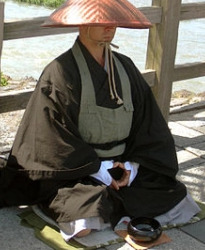
A rakusu (絡子) is a traditionally Japanese garment worn around the neck of Zen Buddhists who have taken the precepts. It can also signify Lay Ordination. It is made of 16 or more strips of cloth, sewn together into a brick-like pattern by the student during their period of preparation for their jukai or ordination ceremony.
Samue
youtube

Samue (作務衣) is the work clothing of Japanese Buddhist monks, worn when engaged in samu.
Sang-kio-ki
Sang-kio-ki and "Ni-fo-si-na" were ramaa people's costumes in India. The Chinese traveller Xuanzang characterised Sramana's clothes in the 7th century as three distinct sorts of robes, each with a different style and cut according on the school they belonged to. Some robes feature huge or small flaps, while others have narrow or wide borders. The Sang-kio-ki conceals the two armpits while covering the left shoulder. It is worn closed on the right side and open on the left. It is longer all the way down to the waist. The Ni-fo-si-na was a loin garment that was plaited in folds and corded around the loins. There are no tassels or griddles on it. Different schools used various hues.
Stanapatta
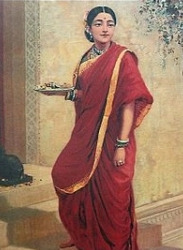
Stanapatta (Stanmasuka) was a loose upper body wrap fabric. It was an old Indian breast band. It was a basic top garment worn by women in ancient times, akin to the mamillare or strophium used by Roman ladies. Poshak included Stanapatta. Klidsa describes kurpasika, another type of breastband that he associates with uttarasanga and stanapatta. Innerwear for the lower body was known as nivi or nivi bandha. Malhar's Skandamata sculpture portrays the ancient use of stanapatta and kanchuki.
Temple robes
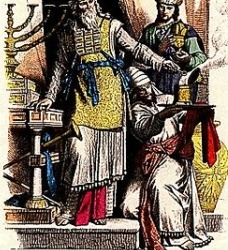
Temple robes describe the ceremonial clothing worn in the performance of ordinances and ceremonies in a temple.
Uttariya
An uttariya is a loose piece of upper body clothing. It is a single piece of cloth that falls from the back of the neck to curl around both arms and could also drape the top half of the body. An Uttariya is similar to a veil, a long scarf and shawl.
Referencing:
Pratima. (2022). Buddhist religious clothing, amulets & talismans. [Online]. mandalas. Last Updated: 28 December 2022. Available at: https://mandalas.life/list/buddhist-religious-clothing-amulets-talismans/ [Accessed 18 September 2023].
1 note
·
View note
Text
Bikini day tra due pezzi crochet e glamour anni '80
(ANSA) – ROMA, 24 GIU – Anche se i costumi due pezzi,
chiamati subligaculum e strophium, erano indossati già
nell’antichità, come risulta dal ritrovamento di urne, affreschi
e mosaici di epoca greca e romana (i più antichi risalgono al
1400 a.C.), il moderno bikini, l’adorato due pezzi che non manca
mai in nessun guardaroba femminile delle vacanze, festeggerà il
5 luglio il suo anniversario, come…
View On WordPress
0 notes
Text
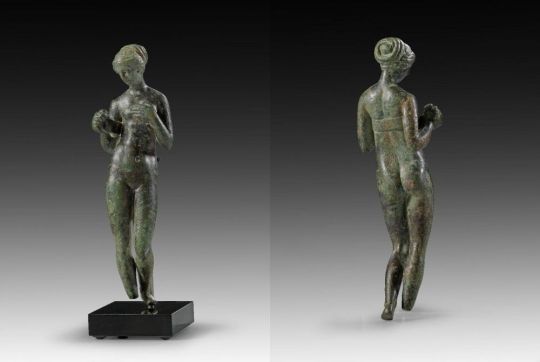


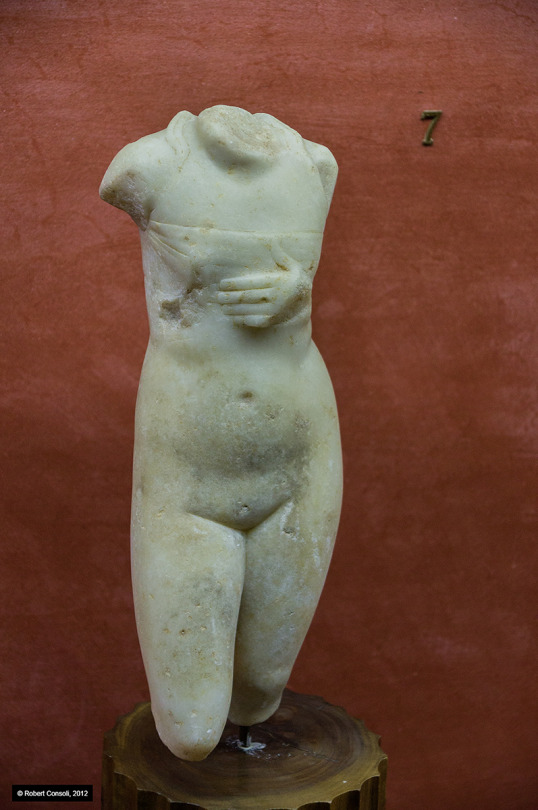






Strophia in Ancient Art
A strophium (or strophion) was a band of cloth worn around the chest in the Ancient Greek and Roman worlds to support or shape the breasts.
Bronze Statue of Venus, Roman, 2nd Century AD. Private Collection.
Bronze Statue of Venus, Roman, 2nd Century AD. Private Collection.
Terracotta Figurine of Aphrodite, Hellenistic, 1st Century BC. Department of Antiquities, Cyprus.
Statue of Venus, Roman, 2nd Century AD. Roman Museum, Merida, Spain.
Statue of Aphrodite, Hellenistic, 3rd-2nd century BC. Metropolitan Museum of Art.
Bronze Statue, Roman (?). Museum Burg Linn, Krefeld, Germany.
Terracotta Lamp Depicting Cupids Helping Venus Tie Her Strophium, Roman.
Mosaic of Women's Athletics, Roman, 4th Century AD. Villa del Casale.
Erotic Fresco, Roman, 1st Century AD. Suburban Baths, Pompeii.
Erotic Fresco, Roman, 1st Century AD. The House of the Centenary, Pompeii.
#decided to make a post bc I'm fascinated by ancient underwear aksjfdhjadhfskj! and also by art that decides to show it#thoughts#tagamemnon#strophium#clothing#long post#sorry abt the lack of specific citation on some of these I'm fighting tooth & nail against uncited pinterest and wordpress type blogs here#oh also#nudity#to be safe
624 notes
·
View notes
Text
Have you noticed how pretty Apollo's hair is?
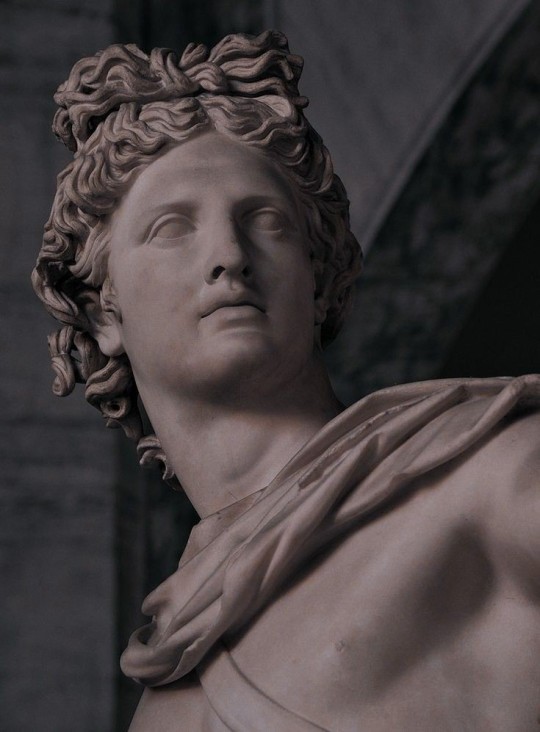
Yeah, me too. Hard not to notice.
But let's take a closer look at his hair, more specifically at Apollo's iconic hairstyle - the "hair bow".
So, why has he been depicted that way and what's up with this hairstyle?
The "hair bow" has been one of the most recognisable features of Apollo.
A great example and probably the most well-known sculpture of this divinity depicted in such a way is the so-called Pythian Apollo, better known as Apollo Belvedere - a marble statue dated to around 2nd century A.D. and considered to be a copy of an original bronze statue of 330-320 B.C. by Leochares, one of the artists who worked on the Mausoleum at Halicarnassus.
The statue has always been greatly admired and even considered to be "the sublime expression of Greek art" by some.
Apollo is depicted as an archer. He moves forward gracefully and seems to have just released an arrow from the bow which he originally carried in his left hand. His quiver is suspended across his left shoulder. He is entirely nude except for his sandals and a chlamys (a type of robe) clasped at his right shoulder, turned up on his left arm, and thrown back.
Now, let's talk about Apollo's locks. His hair, lightly curled, flows in ringlets down his neck and rises gracefully to the summit of his head. We can see Apollo's hair be tied into this beautiful, elaborate hairstyle - the iconic "hair bow"... except it's not exactly a hair bow!
Apollo's hair is encircled with the strophium and it's not just to make it look pretty, there is a good reason for that!
Strophium was a type of band very characteristic and symbolic of people with high status, rulers, kings, and ultimately, gods, making it a perfect hairstyle to symbolise Apollo's status and divinity.
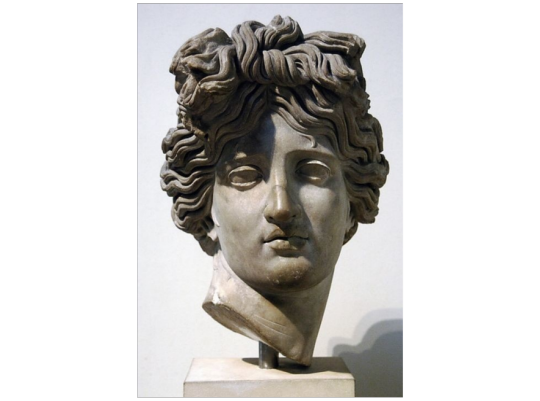
Head of Apollo, modelled on the Apollo Belvedere (marble Roman copy, ca. 120-140 AD)
Perhaps it's not quite like what Lady Gaga would wear; I know, sorry to disappoint you! But who knows, maybe Apollo was somewhat of a trendsetter here?
#ancient art#art#sculpture#classical art#classical sculpture#ancient history#classical history#apollo deity#facts#apollo#apollo devotee#hellenic polytheism#helpol#hellenic deities#hellenic gods
361 notes
·
View notes
Photo

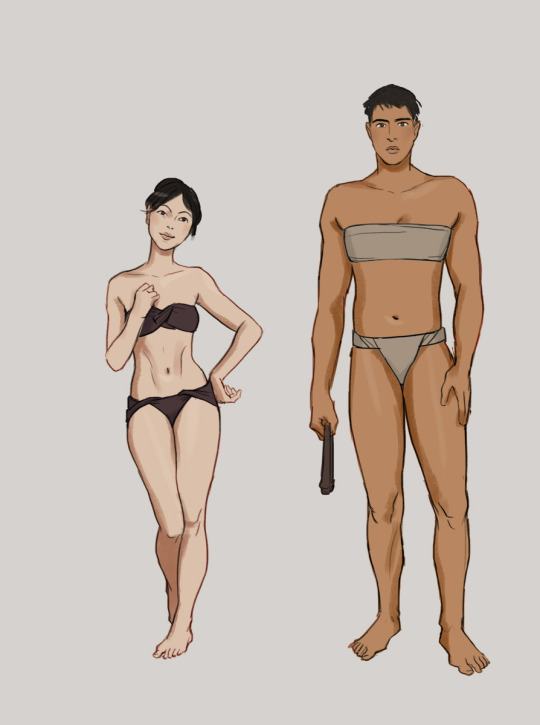

the traitor baru cormorant taught me the word “strophium” :-)
#the traitor baru cormorant#baru cormorant#tain hu#shao lune#baru cormorant fanart#i've returned once in a blue moon to post more obscure book fanart#thank u dickinson for blessing us with canonically swole women
562 notes
·
View notes
Text
Chasing Light | Part II
Pairing/Fandom: Lumity/ToH
Summary: Things are...spicing up.
Warnings: ABUSE, BLOOD, VIOLENCE AND A LOT OF IT
Notes:
Strophium - Cloth wrapped around the breasts (bra)
Palla - Female Roman equivalent of a toga; best to look it up for a picture. Don’t really know how to describe it beside “scarf” but it’s not:(
PART I || PART III || PART IV || PART V || PART VI || PART VII
Odalia’s iron grip tightened around Amity’s hair and wrists with each struggle, causing the captive to cease her rebellious actions and comply with the older woman. Besides, she broke the rules. For that, one must pay.
Amity was dragged back in the direction of the dreaded manor, only to be thrown into a shed that sits off to the side. It was unkempt, dirty. The cement floor was stained a dark crimson and the walls were cracked from the harsh sunlight. The brown-haired girl knew the room too well, for on occasions where her mistress was angry, she would be pulled there and beaten until miles past exhaustion. She had learned to not fight it - there was no point.
Her knees slammed against the rough stone as she was shoved to the ground, scraping the skin off her hands in an attempt to catch herself in the process. Odalia took her time. One by one, causing her ‘daughter’ to anxiously wait for what was to come.
A candle was lit. The shadow behind Amity grew as she covered the back of her head and curled into a ball. She couldn’t fight it, she would never win.
A whip bounced off of the dry walls, sending a shiver through their brittle bones. They could only watch the poor girl suffer, even after all these years.
Amity flinched, sucking in a sharp breath. The first was easy, the rest would be easy as well.
Wrong.
Another crack broke the air and stripped straight through Amity’s tunic and strophium, licking her bare flesh.
A weak whimper escaped her lips. Odalia cackled and drew back once more.
CRACKLE!
The scourge painfully sliced through the thin flesh on Amity’s back, feasting upon the red that dripped from the wounds left in its wake. The sharp edges dragged back and forth, digging deeper with each thrash and pullback.
Odalia continued the beating until there was barely a shirt left on Amity’s back, completely shredding it and everything else in its path. The latter lay limp on the floor, silently sobbing.
Her back stung like the sting of a thousand scorpions. She was in unbelievable pain, unable to move a single muscle in fear of the rest of her body shutting down permanently. The torn flesh screamed in agony as the air clung to it like a wet washcloth, making her shudder.
Amity stayed rooted to the stony deck as Odalia triumphantly smirked and threw the scourge back in the corner before making her exit. A vile woman, that one, if one should choose to even address her as human.
It was many minutes before any of the other slaves poked their heads inside as they usually did. Granted, the first few beatings they did not help her since she was a Blight, but after they witnessed the inflictions, they eventually opened their arms for her. They did not interact with her outside of the shed, but they would sate her wounds until she could continue working.
So, they did what they do best. They got to work.
~~~~~~~~~~
One week later
~~~~~~~~~~
“It’s not like she’ll actually see you. Just walk by.” Luz mumbled, pacing back and forth. “Smoothly. Walk by smoothly. You can do that. You’ve slain a cyclops. You can stroll by a house.”
The legionnaire had been on patrol for the last three hours checking the perimeter of the town and establishments within five miles of said town. Well...for the last ten minutes she had been tracing and retracing the same eight steps barely outside the view of the Blight Manor.
Luz never would have thought she would have this much difficulty simply passing a house. Even if the house wasn't what she was afraid of seeing, her mind was screaming at her to woman up and continue her patrol.
Without warning, a crash not far away caught Luz’s ear. She poked her head around the corner and saw a carriage with a figure behind it, seemingly loading it. Apparently, however, the figure dropped something, so Luz being the curious soul that she is went to investigate, unknowingly gravitating toward the building she had been avoiding.
“Stupid,” Luz heard a thud follow the word, “Worthless,” another thud, “slave!”
Upon hearing the last word, Luz quickened her movements and fully came into view of the two figures. What she saw sent her into a frenzy.
Amity was curled into a half-ball on the dry road whilst Odalia kicked her again and again. On top of that, a dark crimson could be seen seeping through the back of Amity’s shirt - and it looked like streaks.
Luz immediately went into fight mode and pulled Odalia off of Amity, throwing her to the ground in the process.
“Stay down.” Luz warned.
“She’s my slave-”
Luz unsheathed her sword, pointing it directly at the woman’s throat.
“I said stay down.”
Odalia seemed to stay down at that point, allowing Luz to sheath her sword and turn back around to the injured girl that was struggling to get up. Luz crouched and hovered by Amity, mentally figuring out how to go about the situation.
“Amity.”
“I don’t need your help.” Amity grunted, grabbing on to the side of the carriage but ultimately slipping and hissing in pain.
“Put your arm around my neck.”
“I said I don’t need your help-”
“I’m not asking.” Luz affirmed.
Amity looked back and saw the intense and, not to mention, serious, gaze of the centurion. Her back was screaming due to one of the wounds opening back up when she dropped the box, but she didn’t want to look weak. If she looked weak, she would be punished.
Reluctantly but surely, Amity slung her right arm over Luz’s neck and the latter carefully scooped her into her arms. The arm under Amity’s legs supported most of the weight in fear of causing her back to bleed more.
“You can’t take her. She’s not yours!” Odalia howled, dusting off her tunic.
Luz continued toward the hill, patrol and Odalia long forgotten.
“She’ll...find you, you know.” Amity dazedly mumbled, subconsciously tightening her arms around Luz and burying her head in the woman’s neck.
“Let her find me. It’s you that I’m not letting her near.”
At that moment, Amity’s heart did a backflip. No, two backflips. Was this the feeling of being cared for? Cared about? She didn’t quite know, and she didn’t want to question it either. If she did, it would slip away. Gods, she didn’t want it to slip away, no matter how foreign it was to her.
They continued up the hill until they reached the town, briskly but not enough to irritate Amity’s wounds further. Swerving before they arrived at the gates, Luz traveled around the wall until they were on the eastern side and then entered the town. She went to the first house on the left, seeing her friend outside.
“Willow!” Luz shouted, “I need your help.”
Willow gasped and ran over, “What happened?”
“I’m not sure.” Luz continued, “I need uva ursi and plantain.”
The nature-lover took a second glance at the body her friend was carrying but did not say anything related to them.
“Right.”
With Amity completely passed out from blood loss and no doubt exhaustion, Luz gently laid her on her stomach and ripped open the back of her tunic and carefully peeled off the vermillion-soaked strophium.
What she saw next caused her to choke back a sob.
From shoulder to shoulder, from the neck down, from top to bottom. All that was there were scars and a lot of blood. Lash marks in x-shapes, divits in the tissue, countless short scratches. It was practically a murder scene.
Shaking herself from shock, Luz grabbed a cloth. As she did so, Willow entered the room with the three plants in hand and a bucket of water. The cloth was dipped into the water, wrung, and sluggishly placed on the re-opened wounds, turning from white to red within a second. Every few dabs, the uva ursi would be applied, aiding the effort in discontinuing the bleeding.
After replacing most of the clear liquid with scarlet ichor, Luz got to work with the plantain - one of the weeds to heal wounds. She took the reeds and placed them accordingly, then wrapped them so they would stay.
When she was satisfied with her tasks, she moved Amity to a cot in another room and draped a blanket over her. The latter was still unconscious but seemed to have a more tranquil than agonized expression. Luz soundlessly exited and latched the door, coming face to face with her friend.
“Is she okay?” Willow worriedly inquired.
“She will be.”
“Thank goodness.”
“Wait. Do you...know her?”
“It’s-it’s complicated.”
“Willow.” Luz put a hand on the other girl’s shoulder, “I might be able to help her if you know something.”
Willow paused and contemplated the thought for a moment before sighing.
“Amity Blight. We...we were friends as children-”
“Blight?” Luz blurted.
“Well, yes-”
“Amity Blight.”
“That’s...what I said, yes.”
“I’m sorry, Willow, but I think there’s something I need to take care of. I’ll be back.”
“But, Luz-”
Before Willow could finish, Luz had already sped out the door and outside the gates, winging her way back over to the southern wall.
With each step, Luz’s stance became more intimidating. Her shoulders broadened, her anger visibly flared, and her strides elongated.
She was infuriated.
Odalia had just dismissed a few slaves and was, unfortunately for her, still outside the main house.
Every footfall caused Luz to clench her fists tighter. The sight of the woman sent pure fire through her body, fueling her actions.
“She’s your daughter!” Luz yelled, coming up to the Blight household. The slaves stopped and leered.
“I’ve no idea what you’re talking abo-” Odalia was cut short.
Luz grabbed Odalia’s palla and threw her against the wall, securing her by pressing against her shoulders with her left arm.
“You heard me.” Luz growled. “She’s your daughter. Amity is your daughter.”
Odalia sneered. “That abomination is not my daughter.”
“You’ve been passing her off as a slave for Gods know how long. Why?”
“I said,” Odalia spat, “That thing is not my daughter.”
Luz attempted to strike back, but was surprised by Alador opening the front door with a solemn guise present on his face. He looked at the legionnaire.
“She’s not worth your time.” He sighed, “Trust me, I would know.”
“Amity’s your daughter.”
Alador cast his gaze to the ground before resuming eye contact. His demeanor exuded fatigue, as if he had lied for far too long. His lips drooped then formed a line when he replied, a slight nod in his movements.
“She is.”
“Alador-”
“Not now, ‘Dalia.”
Luz’s force subsided, allowing the woman to slip from her clutches. However, said woman seemed as if she was about to burst. The centurion stood tall, clenching her fists once again and lifting her chin.
“Tell me everything.”
#lumity#toh#the owl house#lumity fic#luz noceda#amity blight#gus porter#willow park#toh fic#the owl house fic#tw: violence#tw: blood#tw: abuse#odalia blight#alador blight#my fics
43 notes
·
View notes
Text
Quelques siècles avant Jésus-Christ, les femmes cherchaient à camoufler leurs seins. Du temps des Romains et des Grecs, elles portaient des «strophium», des larges bandes de tissus – souvent du lin - qu’elles drapaient autour de leur corps pour effacer leur poitrine. D’autres noms pour ces ancêtres du soutien-gorge : des mastodetons ou des fascias. À cette époque, les femmes ont clairement un look androgyne.

Le soutien-gorge au Moyen-Âge. Fini le temps où on désire empêcher le développement des seins et où on les cache. C’est le début des vêtements qui les mettent en valeur. Les robes rehaussent le buste, les effets des lacets au milieu de la poitrine attirent le regard et plus les seins semblent « débordant » mieux c’est! Non, en fait le top est de voir un mamelon fuyant sous les tissus.

La longue époque du corset. Le corset s’est porté pendant environ 400 ans, du 15e au 20esiècle. Son but : comprimer la taille au maximum pour faire ressortir les hanches et la poitrine à l’aide de lacets, de baleines et de tiges. Du coup, il sculpte, moule, soutient et étouffe le corps. D’abord, ils sont constitués avec des morceaux de bois puis ensuite avec des morceaux de métal. On peut dire que le 19e siècle est l’apogée du corset qui, désormais, arbore des bretelles. Même si le corset est gage de féminité et de sensualité, il reste que celui-ci récolte beaucoup de critiques, car ses détracteurs affirment qu’il cause divers problèmes de santé et douleurs, comme l’atrophie musculaire des abdominaux et des dorsaux. Difficiles de savoir si tout est vrai, mais reste que physiquement le corset pouvait avoir des allures de véritables prisons, gênant les femmes dans leurs mouvements.

Le premier soutien-gorge!
À 1889, à l’exposition universelle de Paris, Hermine Cadolle présente un corset en deux morceaux, avec une partie se terminant sous la poitrine. Et voilà! L’ancêtre du soutien-gorge faisait son apparition. Toutefois, le public n’a pas été conquis d’emblée.
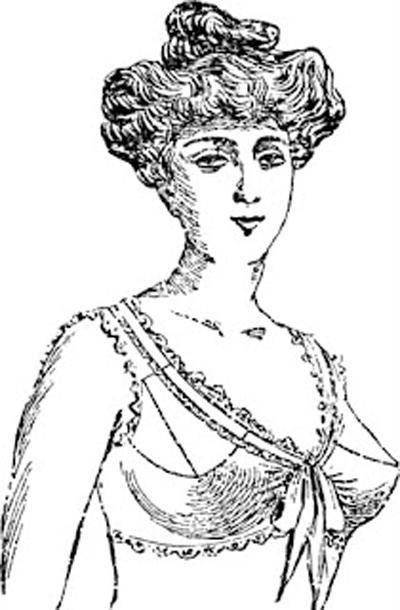
L’invention des bonnets. Le premier modèle de soutien-gorge fait de deux bonnets – des triangles - reliés ensemble est créé par une américaine du nom de Mary Phelps Jacob en 1914. La Première Guerre mondiale chasse les inconfortables corsets.

La mode des pin-up! Dans les années 50, c’est l’époque des soutiens-gorge pigeonnant qui font des seins un peu pointus, éléments clés des pin-up des fifties!

Vers le milieu des années 60, la compagnie canadienne Canadelle met en marché des soutiens-gorge «push-up» qui remontent la poitrine des femmes et la mettent bien en valeur. Depuis, les modèles push-up se sont multipliés et on en retrouve dans toutes les compagnies comme ce modèle proposé par Wonderbra.

Confort, féminité et beauté. En 2013, le choix des soutiens-gorge est immense! On recherche à la fois le confort dans un look ultra féminin et la féminité dans un modèle plus sportif. On en trouve de toutes les couleurs, tous les styles et tous les besoins comme celui-ci parfait pour enfiler ensuite une robe au décolleté plongeant.

43 notes
·
View notes
Note
You could check out the strophium! It's like an acient sports bra
it’s mostly the underpants that im concerned abt because kiernan has like. a specially tailored binder.
2 notes
·
View notes
Text

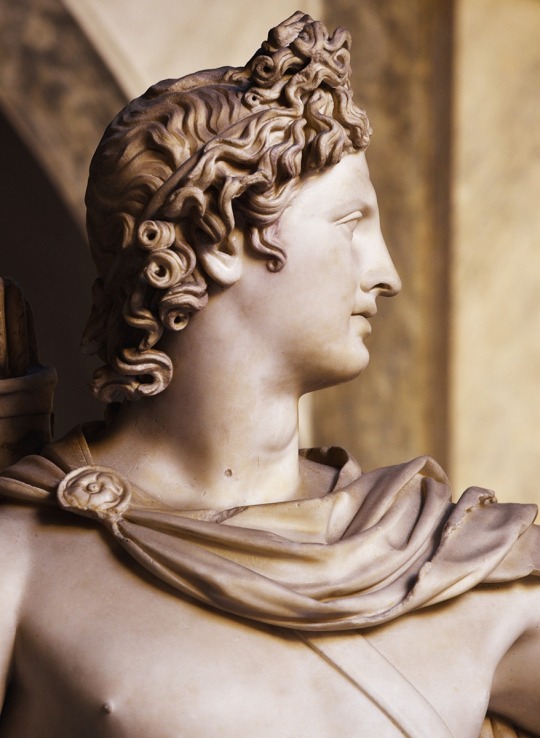

Apollo Belvedere
The majesty of the handsome Greek god is exquisitely captured in this marble sculpture found in the Courtyard of the Statues of the Vatican Museums.
The statue, which was created in 320 AD, is believed to be a replica of a lost bronze statue that dates back to the middle of the 2nd century B.C.
The arrow has just left Apollo's bow and the effort impressed on his musculature still lingers. His hair, lightly curled, flows in ringlets down his neck and rises gracefully to the summit of his head, which is encircled with the strophium, a band symbolic of gods and kings. His quiver is suspended across his left shoulder. He is entirely nude except for his sandals and a robe (chlamys) clasped at his right shoulder, turned up on his left arm, and thrown back.
"Apollo gives the sense that the death blow he just delivered was of no challenge to him. There is no intensity or joy in Apollo's face, but only a short of melancholy as if the battle meant nothing to him."
From the mid-18th century it was considered the greatest ancient sculpture by ardent neoclassicists, and for centuries it epitomized the ideals of aesthetic perfection for Europeans and westernized parts of the world.
456 notes
·
View notes
Text
تاریخچه شورت زنانه
هزاران سال است که بشر لباس زیر خود را از برگ و پوست درختان و پوست حیوانات درست کرده است.
استفاده از لباس زیر برای زنان از سال 450 قبل از میلاد در یونان آغاز شد ، لباسی که برای پوشاندن برجستگی های بدن زنان استفاده می شد. در بیشتر تمدن های باستان ، لنگ از اولین لباس زیر بود. لولاهای چرمی با قدمت بیش از 7000 سال در هاوایی باستان و ژاپن پیدا شده است.
شلوارک در دوران باستان نیز معمول بود. یکی از پادشاهان مصر باستان با کوتاهی از آن زمان به خاک سپرده شده است. زنان ایرانی باستان نیز از سوتین های پارچه ای استفاده می کردند. به طور رسمی ، زنان رومی از آنها یاد گرفتند. در این زمان بود که مردان رومی شروع به پوشیدن لباس زیر کردند.
در قرون وسطی لباس خواب گشاد و جایگزین شلوار استرچ مردانه جایگزین می شد. در این زمان زنان نیز شروع به پوشیدن سوتین کردند.
در قرن سیزدهم ، از نوارها برای نشان دادن کمر باریک استفاده می شد و در اواخر قرن 14 ، لباس زیر به گونه ای طراحی شد که از جلو با ورق های برنجی بسته شود.
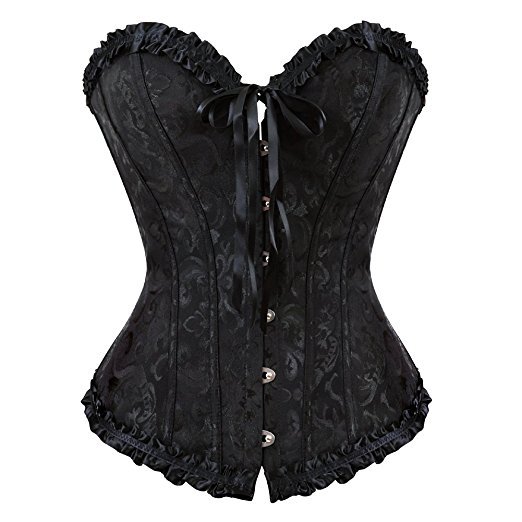
ظهور تمدن و تغییر در شورت زنانه
با ظهور تمدن ، وقتی انسان از پارچه لباسی درست کرد ، آنچه در زیر آن می پوشید به معنای مورد نظر ما تبدیل به زیرپوش می شود. در تمدن مصر ، کشیش ها ، شاهزادگان ، اشراف و فرعون ها دو پیش بند پنبه ای می پوشیدند تا خود را از دیگران متمایز کنند. پیش بند نخی که نزدیک بدنه بود ساده بود ، اما پیش بند دومی که روی این پیش بند ساده می پوشیدند دارای نقش و نگار بود. زنان دربار مصر نیز سینه ها و قسمت های خصوصی خود را با پارچه می پوشاندند. و آنها به لباس اهمیت می دادند و سعی می کردند با لباس آراسته خود برجسته باشند.
در ادامه به بررسی زنان ملیت های مختلف می پردازیم
زنان یونانی
زنان یونانی علاقه زیادی به لباس زیر ، به ویژه سوتین داشتند. زن یونانی سینه های خود را با پارچه یا چرم می پوشاند. این سوتین که Strophium نام دارد ، دارای نخ بود که زیر پستان بسته می شد تا پستان برجسته تر و زیباتر به نظر برسد.
زنان ایرانی
زنان در ایران باستان بسیار باحجاب بودند و شورت و سوتین نمی پوشیدند بلکه لباس و چادر می پوشیدند.
زنان رومی
زنان رومی رسم سوتین را از زنان یونانی و ایرانی گرفتند و علاوه بر این یک تکه پارچه را به قسمت خلوت خود بستند و این تکه پارچه را بالا و پایین کشیدند به طوری که قسمت های خصوصی و باسن آنها را پوشانده و سرانجام آن را بستند تا کمر با پارچه. این پوشش Subligaculum نام داشت.
شورت زنانه امروزی
امروزه تنوع در خرید شورت زنانه به قدری بالا رفته که از آن در برخی موارد بهعنوان یک لباس مستقل استفاده میشود. علاوه بر تنوع در مدل، تنوع در جنس و کیفیت نیز بالا رفته و این امکان را به افراد میدهد که در انتخاب خود خرید لباس زیر ارزان ، گزینههای متعددی داشته باشند.
1 note
·
View note
Text
You know, I bet when an Ancient Roman woman got home she’d reach into her peplos and untie her strophium, then yeet it across the room.
Gives a certain sense of community across the ages, doesn’t it?
1 note
·
View note